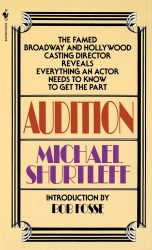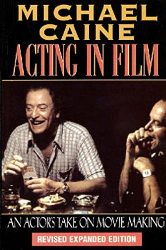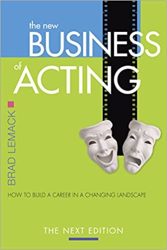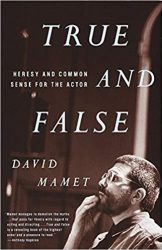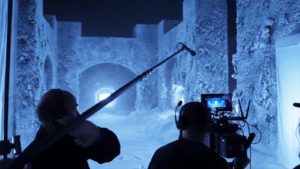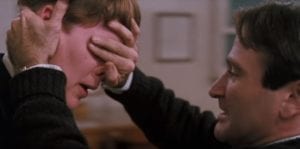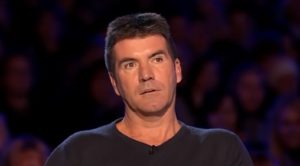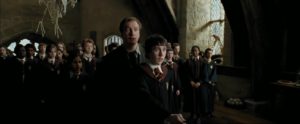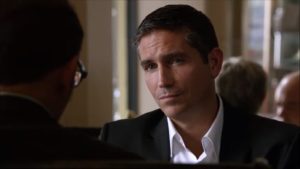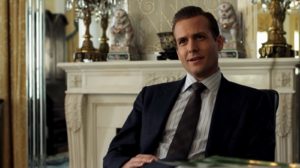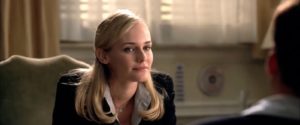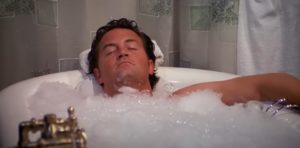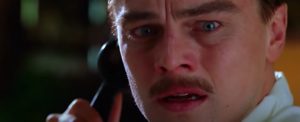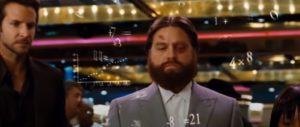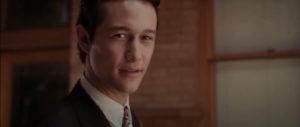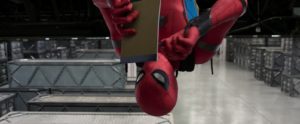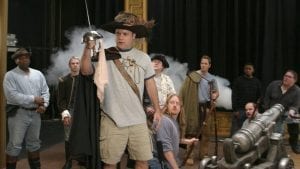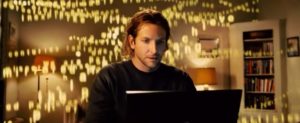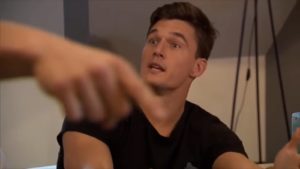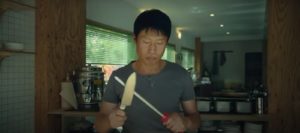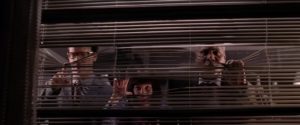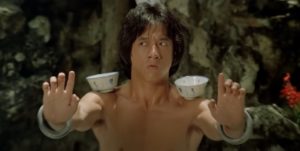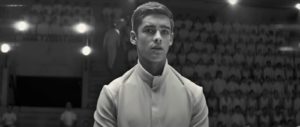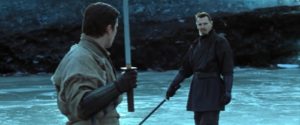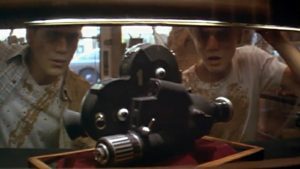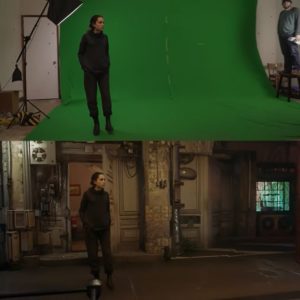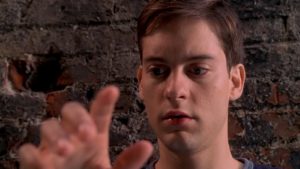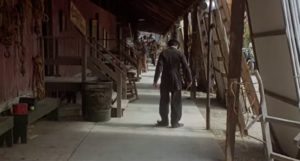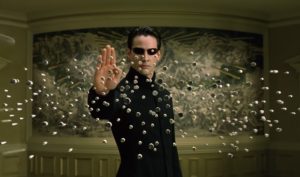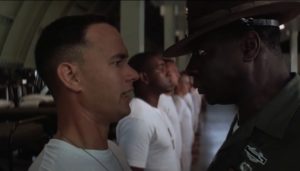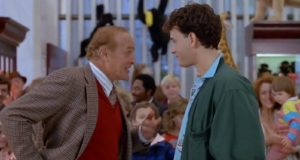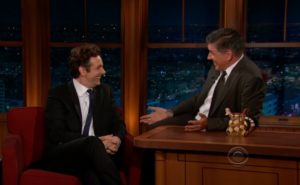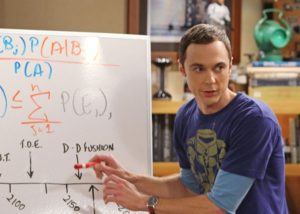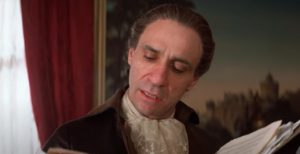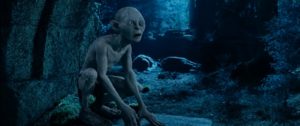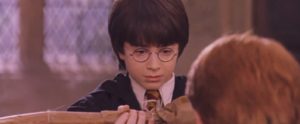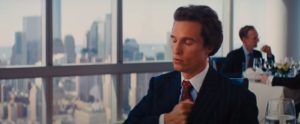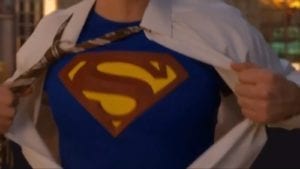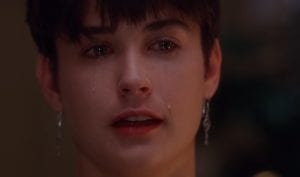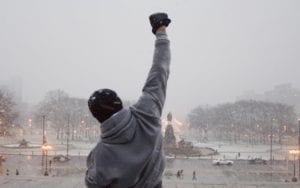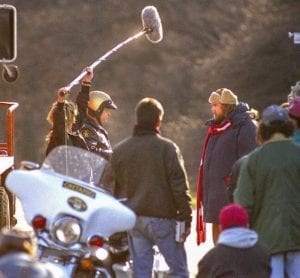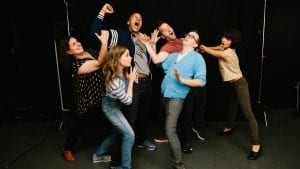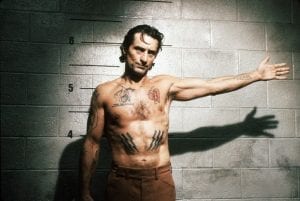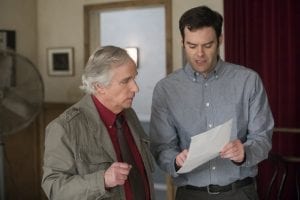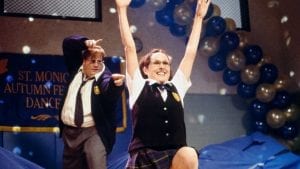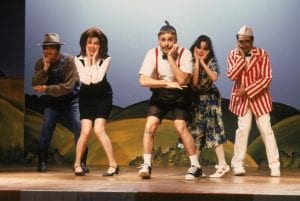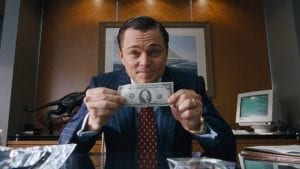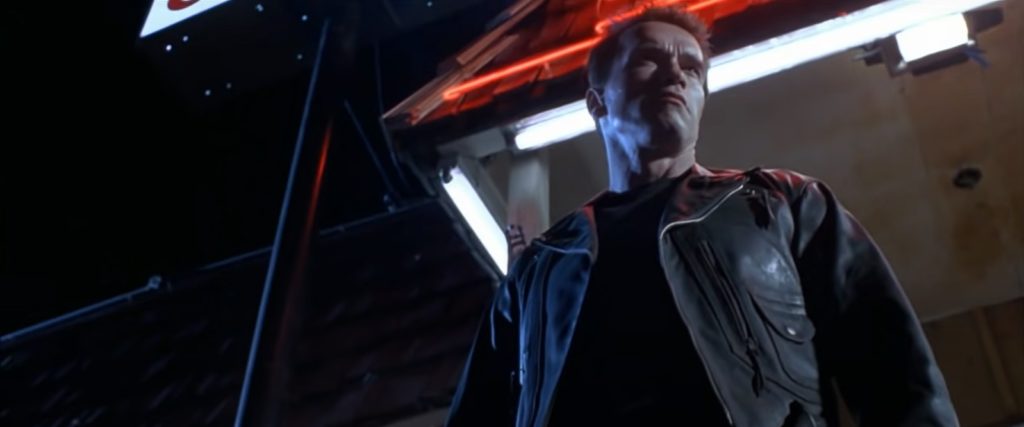
If you have a self-tape audition or an in-person audition coming up and you’re wondering what to wear, know that there are no hard rules, just generally recommended guidelines. Here are the general guidelines on what to wear to a self-tape audition or in-person audition:
If there are clothing instructions, follow them. If you can sneak in a hint of the character so it affects casting directors without them noticing, feel free. Clothes should be so undistracting that they don’t even notice what you’re wearing because you’ve made all their attention be on your acting.
Details, as well as specific examples, are given below. Know that film and TV tend to have different expectations compared to commercial auditions.
1. Check to see if the audition instructions say anything about clothing.
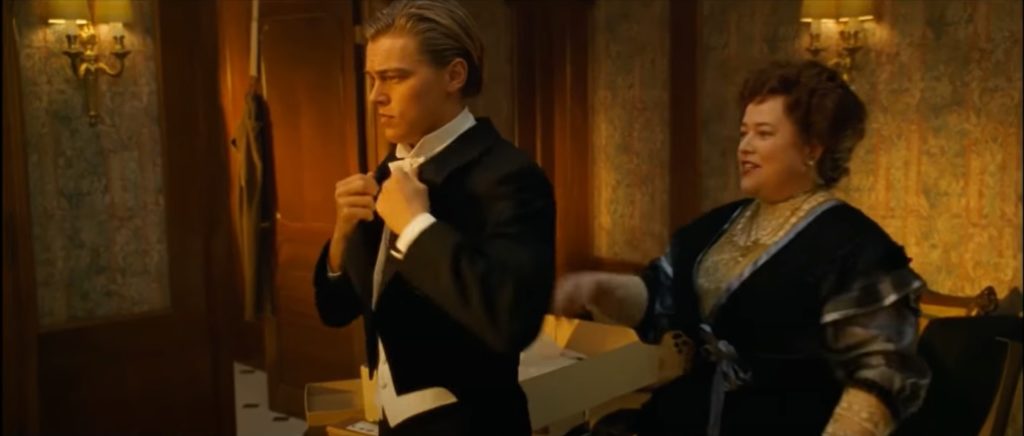
First of all, look at your audition instructions, because sometimes they include instructions about how you should be dressed in the audition. For example, you might get instructed to wear a suit and tie, which means that they won’t even consider you if you don’t wear a suit and tie. You might get commercial auditions where the audition partially involves you wearing athletic clothing while showing yourself playing basketball. In that case, again, you already know what they want you to wear. Make sure you read the instructions carefully. If the instructions do not contain any information about clothing, read on.
2. Wear clothing that doesn’t distract (e.g., no graphic T-shirts).
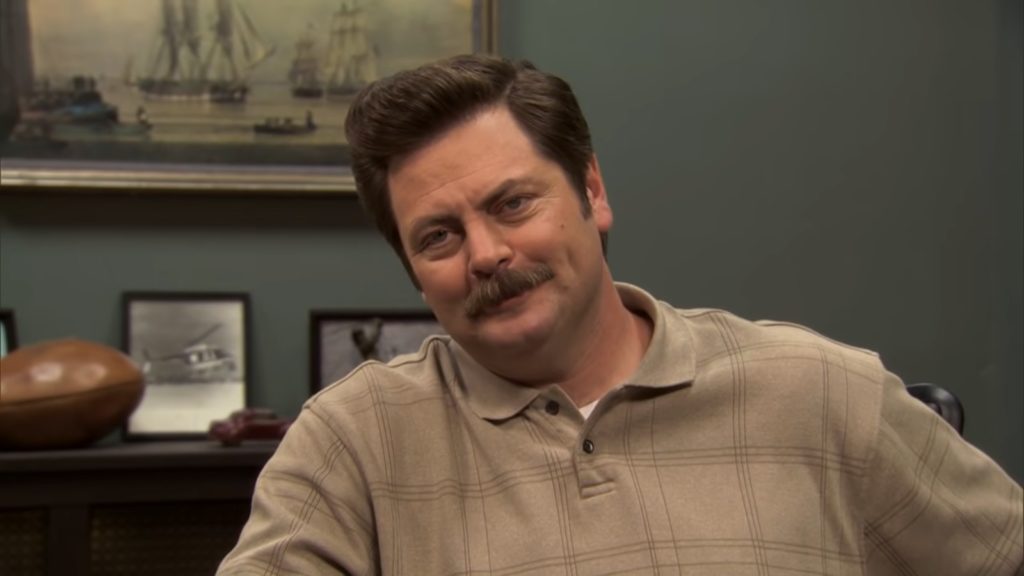
When you’re auditioning, you want the focus to be on you, not on your clothing. You should be able to forget about the clothes you’re wearing and just act, and your clothes should be such that the casting director is also able to forget about the clothes you’re wearing and also just watch you act.
- Clothing that was designed to attract attention (such as clothing with pictures, words, or some patterns) can be distracting. In general, just going with plain, single colour clothing is a safe choice. Similarly, jewelry can also be distracting so it could be best to avoid wearing jewelry to auditions.
- Clothing that is too revealing can be distracting, so you might want to avoid that too. You want the focus to be on your face.
- Avoid uncomfortable clothing. If you keep thinking about your clothes during your performance, then chances are the clothing is taking away from your performance. This may mean not wearing high heels.
3. Wear colours that are visible against the background.
If your clothing is the same colour as the background, it’s not a dealbreaker, but it can be distracting. For example, the videos below are not auditions but you can see how, with the black clothing against the black background, it can be a bit distracting.
Therefore, it could be a good idea to choose colours that are different from the background.
4. Consider how lighting can affect your appearance.
Under some lighting, a black T-shirt can just appear like a region of blackness where you can’t make out any movement of the folds of the fabric, making it hard to see the movement. Under other lighting, a black T-shirt can look fine. These videos below give examples – see how in the first video the black shirt just looks like blackness whereas in the second you can see a lot more of the movement.
Similarly, under some lighting, a white shirt can reflect too much light. Wearing colours like grey or navy blue might be better.
Note: when you’re doing a self-tape audition, having good lighting and good sound is way more important than what you wear. I know many casting directors who say that they’re really forgiving with self-tape quality and that all they want is to just be able to see you clearly and hear you clearly. Therefore, for visibility, make sure that you have lighting that is shining at you from the front (like from a window or a ring light) and that you’re filming in front of a neutral wall. For sound, make sure you reduce background noise, such as by closing the windows and turning off any fans.
5. Don’t wear hats or things that obscure your head and face.
Hats, in addition to possibly being distracting, can have the disadvantage of hiding what your head looks like. You can see in the video below how the actor originally wore a hat but then took it off later in the audition, possibly at the request of a casting director.
Don’t wear monocles or anything else that affects your face. You want the focus to be on your facial expressions, not on props. (Props is another thing that people have questions about but it’s too big to be discussed in this article. To be safe, maybe don’t use props, and definitely make sure you don’t bring anything to an audition that looks like a weapon.)
6. If you don’t wear glasses in your headshots, avoid wearing glasses in auditions.
In addition to the fact that glasses can hide some of your emotional eye expressions, something else to take into consideration here is this: do your headshots show you wearing glasses? If no, it could be better to take them off, because they expect to see you as you are in your headshots. Casting directors really don’t like it when people show up looking different from their headshots.
As you can see in this article, people’s appearance can change a lot with vs. without glasses: https://www.cosmopolitan.com/style-beauty/a46959/glasses-on-and-off-photos/
If you normally wear glasses in everyday life, you can wear contacts to your auditions or, if you’d prefer not to, you can consider the example of Emmy-nominated actress Tovah Feldshuh, who likes to audition without her glasses so she retypes the text large so she can see it without her glasses (source).
7. For film and TV auditions, wear clothing that hints at the character (no costumes).
In film and television, most casting directors will tell you not to show up fully dressed up as the character. However, there is a bit of a debate among actors about how much of a “costume” is considered too much because, although most actors do not wear costumes, some still do. An advantage of costumes is that they can help the casting director imagine you in that role you’re auditioning for, and costumes might also help you get in character more easily. However, here are some reasons why you might not want to wear a costume:
- Wearing a costume can make you look like you’re desperate and trying too hard, which may make casting directors feel that you’re not confident enough to rely on just your acting abilities. If you don’t trust yourself, why should they? It’s like if you had the choice between getting surgery from someone who wasn’t sure of themselves vs. someone who is calm and looks confident – you’d probably avoid the unsure person, because maybe they have a good reason to be unsure.
- The costume could be distracting for both you and the casting director. Are you truly able to be comfortable and forget about the costume while you are acting? For example, if you were to board a bus in that costume, would you feel okay with that or would you constantly be thinking about how you look? This irrelevant attention towards your costume can take away from your performance.
- Sometimes, you may audition for one thing and then get offered a completely different part that they think you’re more suited for. Wearing a costume can might make it difficult for the casting director to imagine you playing those other parts. For example, if you come dressed as a pirate, it might be difficult to imagine you as a fairy queen.
To convey the feeling of the character without going overboard, it is generally recommended that actors just wear clothing that “suggests” the character (gives hints of the character). For example, if you’re playing a white-collar professional like a lawyer or doctor, wearing something formal like a shirt and tie can help. Even just a collared shirt instead of a T-shirt can help. As described in the video below, if you’re playing a farmer from the 1600s, you can just wear natural tan colours so it’s easy to imagine you wearing similar colours if you get the part.
Here are some examples of how I’ve used or would use regular clothing to hint at a character:
- Surgeon role: I have a green V-neck t-shirt I wear.
- Police officer role: I have a blue button-up shirt I wear.
- Wall Street lawyer role: I might audition with a suit and tie.
- Soldier: I have a green jacket that I wear that looks semi-soldiery.
- Assassin: I have a black turtleneck that I wear.
These are things that a lot of people just have in their wardrobe that they would wear anyway. I always like to try to give hints of the character in such subtle ways because it can sometimes helpfully influence the casting director, and it can also be nice for you, the actor, as well, helping you get into character. Even though these are just regular clothes, they can still help change the way you feel, similar to how dressing up to go somewhere changes the way you feel.
8. For commercials auditions, wearing costumes may help.
Commercials are a different story because, a lot of the time, the people making the decisions there are not in the film and television industry – they might be a marketing executive working at the company so they might have much less imagination compared to a film/TV casting director. Therefore, it is more common to see costumes in auditions for commercials.
For example, I was once in an audition for a commercial and they wanted people to look like mimes. So, I showed up there with a black T-shirt and prepared a little schtick for the invisible wall thing. I walked into the audition waiting room . . . and there were five full on mimes, with full costumes complete with full face makeup. It’s generally only been in commercials that I’ve seen people show up dressed fully as the character, and this is because sometimes with commercials you have to be that blatant.
However, just to reiterate, it’s the exact opposite if you’re doing an audition for film and television. In auditions for films and TV shows, showing up fully dressed as the character can show a lack of professionalism because it’s distracting and looks like you’re trying too hard. For example, I remember auditioning for a TV show for the role of a baseball player. I just showed up wearing normal clothes, one of the other guys in the room showed up fully dressed as a baseball player – he had the professional jersey on, the cleats, everything. You could tell that even the casting director, when they came out to invite the next person in, was a little taken aback by all that effort. In the end, I don’t think that costume helped him, because I ended up booking that part, with my normal clothes.
In commercials, yes, costumes may help, especially if you’re auditioning for some very specific-looking roles like mimes or professional wrestlers. However, even if you’re doing a commercial, you don’t always have to wear a costume because sometimes you’re just portraying regular people. How do you decide what to wear then? What might help in that case is checking out the company’s other commercials and seeing what people were wearing there, especially the colours. One casting company owner found that, often, commercials have actors wearing colours that match the colours from the product packaging (source), so that’s a little tip you can consider.
9. Watch other actors’ audition videos to see how they used clothing.
Different things work for different people, and there are no hard rules. There have been actors who have done something other than what is recommended and still got the part. It depends on the individual and situation. To help you understand some of these nuances, some audition videos with commentary are shown below. We’ve also included screenshots to show how the characters ended up looking in the actual show so you can see if there are any similarities.
Example 1:
Here is Hugh Laurie’s self tape for House M.D., for the role of a genius doctor who doesn’t like to follow the hospital’s rules. At first glance, it seems he did nothing to his clothing – it’s just natural clothing. That’s what you want the casting director to feel. Looking more closely, you can see him wearing a collared shirt (rather than a t-shirt), which helps show that he’s portraying a white-collar professional (doctor). However, the collar of his shirt is a bit bent around the back, which could help show that he doesn’t really care about the rules. Additionally, you can see that he’s not clean shaven and that his hair is somewhat scruffy, which can further convey the character’s essence of not caring about rules.
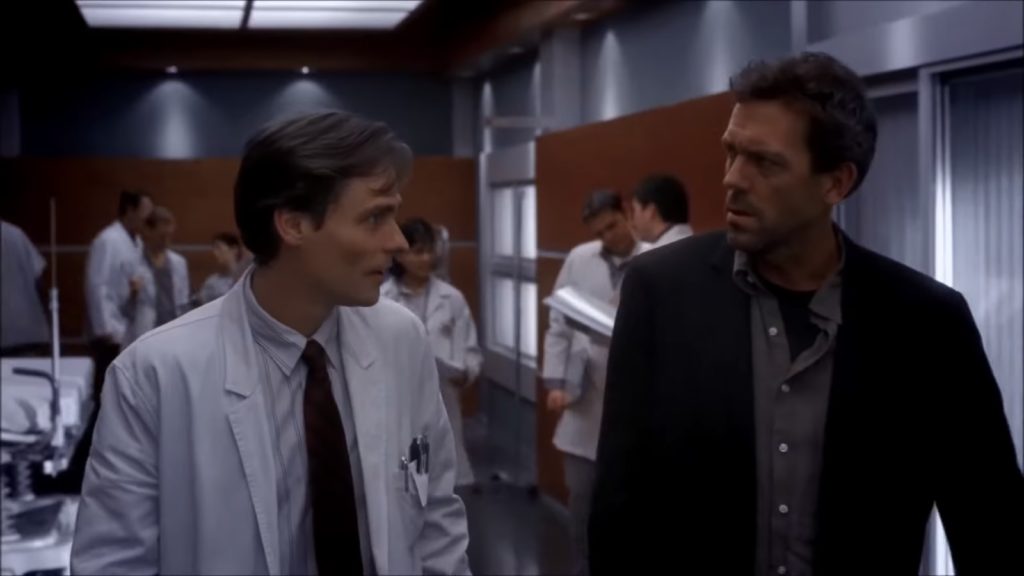
As you can see from the screenshot from the actual show (first appearance in the first episode), Hugh Laurie’s character is wearing a similar colour shirt (possibly because it was decided that that colour looks good on him), you can see that the shirt collar is not properly positioned, and you can see that he’s the only doctor not wearing a lab coat. Perhaps a lesson here could be that you should look at the character beyond the profession. Just because you see that you’re auditioning for the role of a doctor doesn’t necessarily mean that you need to wear a lab coat or a white shirt and tie. It may be that, for the particular character, wearing something else might make more sense.
Example 2:
Here is Betsy Brandt’s audition for Breaking Bad, for the role of the main character’s sister-in-law. You can see here that her clothing also just looks natural, like it’s just something that she wears normally. Her clothing also has the advantage of being easily seen against the blue background.
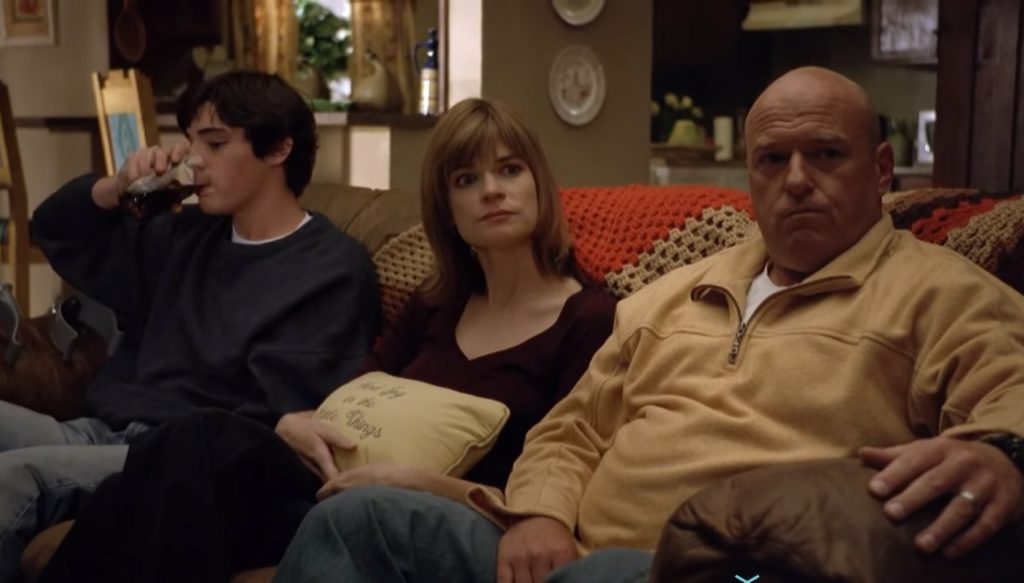
As you can see from the screenshot from the actual show, although Betsy Brandt’s character ends up wearing different-coloured clothing, the level of formality of the clothing is similar to what she wore in the audition. A lesson here could be not to worry too much about the colour and to focus more on the level of casualness.
Example 3:
Tom Holland went through many auditions before he was finally cast as Spider-Man in Spider-Man: Homecoming. However, the casting director (Sarah Finn) stated that it was the screen test with Robert Downey Jr. that was really influential in Tom Holland getting the part, so the video below is timed to show part of that screen test. Of course, a lot of that was the acting and in the chemistry between the actors, but let’s take a look at what Tom Holland was wearing during that screen test and see if that could have added anything helpful. First of all, he’s wearing a t-shirt, and that level of casualness is consistent with the character he’s portraying. The t-shirt has a graphic, but there are no words, and the graphic is the transformers logo, which is related to Marvel movies and can also imply hidden power (since the transformers were these big powerful robots who could pretend to just be cars), and the shape is symmetrical and bears some similarity to the Spider-Man logo. You can also see that the t-shirt is just grey and black and doesn’t take up too much attention when you look at the video. The t-shirt still looks like something he would normally wear. Also notice that, even though Spider-Man colours are red and blue, the t-shirt is not red and not blue; those colours could have been too obvious. The grey t-shirt is much more subtle. If you remember from the other clip shown earlier, in his earlier self-tapes, Tom Holland just wore a plain black t-shirt and used some props, like a backpack or the boot that he pretended pull towards him using his web (here’s the link to to that part of the video). Again, the level of casualness is appropriate for the character and those props don’t really distract from the performance. However, you may notice that in that game-changing screen test, it was just acting, no props.
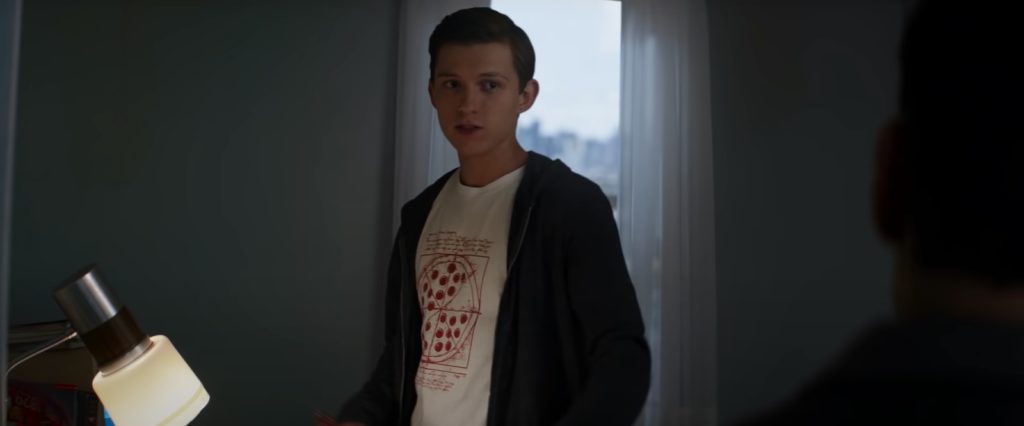
The screenshot above is from the same scene in the movie as the screen test. In this case, as in the screen test, Tom Holland’s character wears a t-shirt with a single-colour graphic and he also wears clothing that is grey in colour. You may notice that in the screenshot below, the graphic on the t-shirt is red, which is a Spider-Man colour, and, although it’s a diagram of a pizza, the overall shape of lines pointing out from the centre is reminiscent of a spiderweb.
Example 4:
The video below shows Jason Momoa’s audition tape for Game of Thrones, for the role of Khal Drogo, who is a barbarian warlord. Although he wasn’t asked to, he did the haka (ceremonial war dance) at the beginning of the audition. You can see he’s wearing a costume, including an old-fashioned shirt, a necklace with claws on it, and forearm guards.
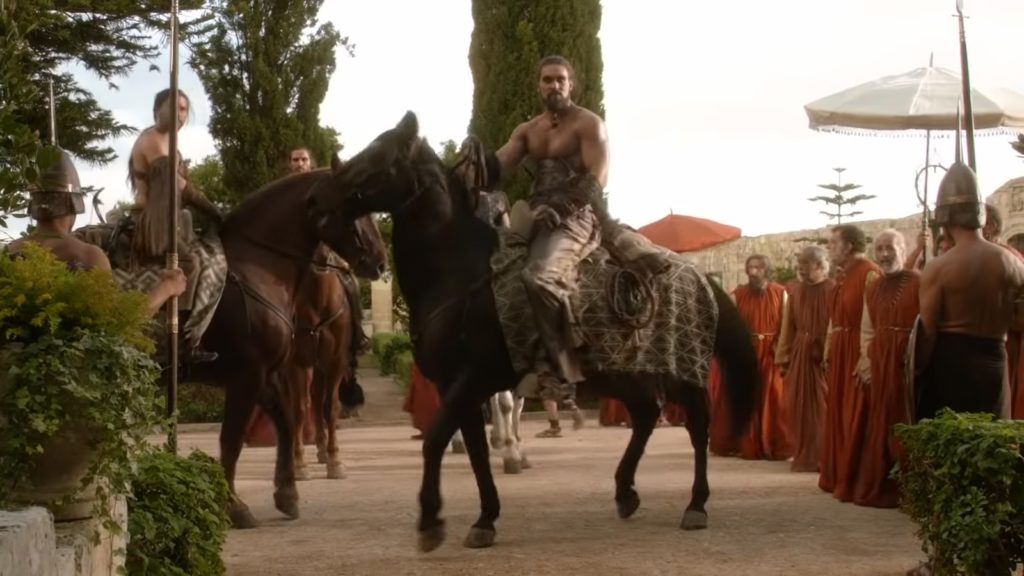
The screenshot above shows that Jason Momoa’s character is shirtless. However, it’s likely a good thing that Jason Momoa was not shirtless during his audition because being shirtless could have conveyed a lack of professionalism and could have taken attention away from acting. Being shirtless is a costume in itself, in a sense. You can also note in the screenshot that he is wearing dark, earthy colours. Similarly, Jason Momoa wore dark colours in his audition. Something to note, by the way, is that Jason Momoa has stated that he struggled to find roles after Game of Thrones (source). Perhaps people couldn’t picture him as anything other than his character in Game of Thrones. When you audition for a role, remember that you’re not just auditioning for one role – you’re potentially auditioning for other roles with the casting director as well because it’s their first impression of you. One of the disadvantages of costumes is that they could make it harder for casting directors to picture you in other roles. Therefore, a lesson here could be that, even though a costume can help you get a role, it might make it difficult for casting directors to consider you for other roles later.
Example 5:
Director James Gunn said he originally didn’t even want to see Chris Pratt for his Guardians of the Galaxy audition but then agreed and, after 20 seconds, decided that Chris Pratt was the perfect choice for the role (source). The role was Peter Quill (Star-Lord), a human-alien hybrid superhero who is like an interplanetary policeman. A video with a clip from that influential audition is shown below. You can see that he’s wearing a dark greenish grey collared shirt, which can convey a feeling of combat and seriousness. This kind of feeling may have been helpful for his audition because it might have offset what Chris Pratt was known for back then; back then, he was mostly known for comedy and was originally considered a bit too overweight for the role. If you click earlier on in the video you can see how different Chris Pratt’s audition for Captain America feels (where he did not get the part), where he’s wearing a grey t-shirt. Perhaps a lesson here could be to think about reasons for why they might not want to cast you, and wear clothing that helps diminish those reasons.
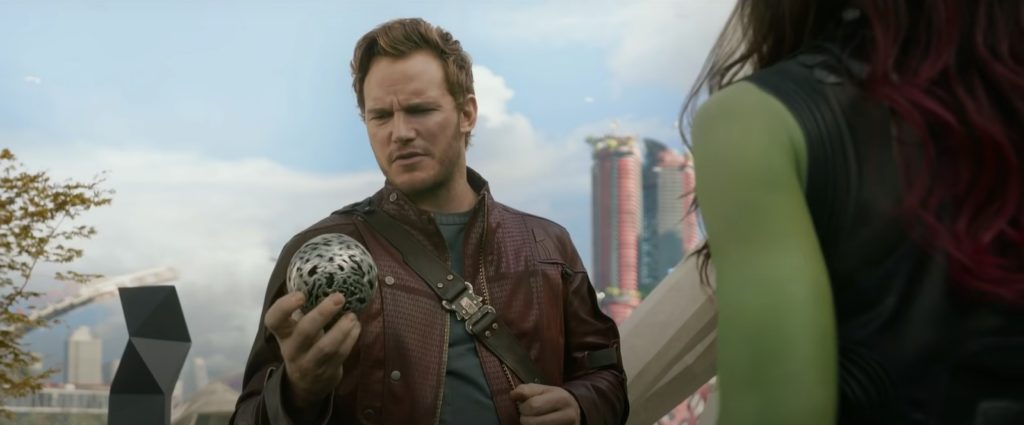
As shown in the screenshot from the film, Chris Pratt’s character ended up wearing a shirt that is similar in colour to that from his audition, and his clothing also has a collar. Perhaps they decided that this style looks good on him. In the comic books, the appearance of this character’s clothing has changed over the years (you can see some examples here), so there was a lot of flexibility in what he could wear. A possible lesson here could be to just find clothing that looks good on you because, even if it’s different from what the character is meant to wear, they might like how it looks on you and choose to do something similar in the film/show.
Conclusion:
Overall, in the above examples, there’s a lot of analysis of how actors’ clothing may have been an amazing choice for their auditions. However, did they actually think through all of this when they chose their clothes? Maybe, maybe not. Perhaps focus more on your acting instead of on your clothes. The point is that, if you wear something that’s not really noticeable, it can blend in with your acting more easily and then, if your acting was amazing, your acting can make your clothes look so good that they decide to use something similar in the final film/show.

